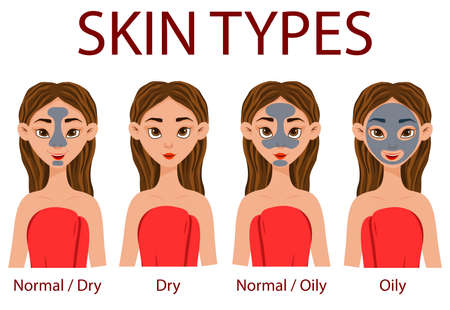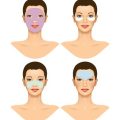Introduction to Emsculpt
In recent years, the British wellness and aesthetics landscape has witnessed a surge in demand for non-invasive body sculpting solutions. Among these innovations, Emsculpt has rapidly become a buzzword across clinics from London to Manchester. Originally developed in the United States, Emsculpt is a groundbreaking technology that utilises high-intensity focused electromagnetic (HIFEM) energy to stimulate muscle contractions and aid fat reduction—all without surgery or downtime. The appeal of Emsculpt lies in its promise: a toned, firmer physique achieved through science-backed engineering rather than traditional methods alone. As UK cosmetic trends shift towards treatments prioritising both efficacy and minimal disruption to daily life, Emsculpt’s popularity continues to grow. Its rise reflects the evolving attitudes of British clients, who increasingly value cutting-edge, evidence-based technologies that help them look and feel their best with confidence.
2. How Emsculpt Works: The Science Behind the Buzz
At its core, Emsculpt utilises a technology called high-intensity focused electromagnetic (HIFEM) energy. This cutting-edge approach is what sets Emsculpt apart from traditional body contouring methods available in the UK. Unlike fat freezing or invasive surgical procedures, Emsculpt directly targets muscle tissue to stimulate growth and definition. But what exactly happens during a session, and how does this technology reshape British bodies?
The Technology: HIFEM Explained
HIFEM delivers powerful electromagnetic pulses through the skin and into targeted muscles. These pulses trigger supramaximal contractions—muscle contractions that are far more intense than anything achievable through voluntary exercise. In practical terms, a 30-minute Emsculpt session can induce up to 20,000 contractions in the treated area, whether thats the abdomen, buttocks, arms or thighs.
Muscle Contractions: Why They Matter
These supramaximal contractions force the muscle fibres to adapt at a cellular level. The body responds by strengthening existing muscle fibres and creating new ones—a process known as muscle hypertrophy and hyperplasia. Simultaneously, these intense contractions increase metabolic activity in local fat cells, leading to enhanced fat breakdown (lipolysis).
Emsculpt vs Traditional Methods: A Quick Comparison
| Aspect | Emsculpt | Traditional Exercise | Surgical Body Contouring |
|---|---|---|---|
| Targeted Muscle Stimulation | Yes, via HIFEM technology | Limited by physical ability and time | No direct muscle stimulation |
| Fat Reduction | Indirect (via increased metabolism) | Slow and variable | Direct removal (e.g., liposuction) |
| Downtime Required | None | N/A | Often required for recovery |
| Risk of Complications | Minimal (non-invasive) | N/A | Higher (invasive procedure) |
| Cultural Acceptance in the UK | Rapidly growing popularity | Mainstream but requires consistency | Established but with stigma for some demographics |
The science behind Emsculpt is straightforward yet impressive. By harnessing HIFEM energy, it offers British clients a non-invasive route to improved muscle tone and fat reduction—a combination rarely found outside of rigorous gym regimens or surgical intervention. For many seeking to contour their bodies without downtime or discomfort, its no surprise that Emsculpt is quickly becoming a buzzword across clinics from London to Manchester.

3. British Perspectives: Why Emsculpt Appeals to the UK Market
The United Kingdom has long harboured a nuanced relationship with body image and wellness, shaped by both traditional values and evolving social trends. In recent years, there has been a marked shift in British attitudes towards fitness and self-care, with a growing emphasis on holistic wellbeing rather than mere aesthetics. This cultural evolution helps explain the rising appeal of non-invasive technologies like Emsculpt across the UK.
Historically, Britons have approached cosmetic enhancements with a degree of scepticism, favouring subtlety over conspicuous transformation. However, as conversations around mental health and body positivity gain momentum, more people are seeking methods to feel comfortable in their own skin without resorting to surgical interventions. Emsculpt’s non-surgical approach fits seamlessly into this ethos, offering tangible results without downtime or dramatic changes that might draw unwanted attention.
Moreover, the UK’s fitness culture is increasingly inclusive and pragmatic. Gym memberships, outdoor activities, and home workouts are widely embraced, but time constraints and busy urban lifestyles can limit consistent progress. Emsculpt complements these efforts by providing a scientifically-backed solution for muscle toning and fat reduction—particularly appealing to those who value efficiency and evidence-based outcomes.
It’s also worth noting that wellness in Britain is now viewed as an integral part of everyday life rather than a luxury or trend reserved for the elite. This democratisation of self-care means treatments like Emsculpt are gaining traction not only in major cities such as London and Manchester but also in smaller towns where access to advanced aesthetic procedures was previously limited.
In summary, Emsculpt’s alignment with British values—subtle enhancement, practicality, and an emphasis on overall wellbeing—positions it as a compelling option for individuals seeking modern solutions within the UK’s unique cultural context.
4. What to Expect from an Emsculpt Session
For those considering Emsculpt in the UK, understanding what actually happens during a session can make all the difference. Here’s a practical walk-through tailored for British clients, reflecting typical experiences at reputable clinics across the country.
Initial Consultation
The journey begins with a thorough consultation, usually conducted by a qualified practitioner or aesthetic nurse. This session covers your medical history, fitness goals, and target areas for treatment. The practitioner will assess whether Emsculpt is suitable for you, addressing any specific concerns or expectations you may have as a UK client. Questions about previous procedures, ongoing medication, and lifestyle are common to ensure your safety and optimal results.
The Emsculpt Procedure: Step-by-Step
| Stage | Description | Typical UK Clinic Practice |
|---|---|---|
| Preparation | You’ll be asked to lie comfortably on a treatment couch, often in a private room. The target area (abs, buttocks, arms, or thighs) is cleaned and prepped. | Clinics usually provide gowns and ensure modesty, aligning with British standards of privacy and professionalism. |
| Application | The practitioner straps the Emsculpt paddles securely onto the chosen muscle group. | Staff explain each step and check in regularly to maintain comfort levels. |
| Treatment | The device delivers high-intensity focused electromagnetic (HIFEM) pulses, causing supramaximal muscle contractions—far more intense than voluntary exercise. | A typical session lasts 30 minutes; you may feel rapid muscle tightening but no pain. Many UK clients describe it as “odd but tolerable.” |
| Completion | Paddles are removed and the area is wiped down. There’s no need to change into special clothing post-treatment. | You’re offered water or tea—a small but distinctly British touch at many local clinics. |
Downtime and Aftercare Expectations
Emsculpt is non-invasive, so there’s no real downtime. Most people return to work or daily routines immediately after their appointment. You might experience mild muscle soreness similar to what you’d feel after an intensive gym session—nothing that should interfere with daily life. Local clinics typically provide written aftercare instructions, emphasising hydration and gentle activity if needed.
Results: What Do British Clients Report?
Visible changes develop gradually over two to four weeks post-treatment. UK clients often report improved muscle tone and subtle fat reduction after just one course (usually four sessions). Clinics encourage before-and-after photos for progress tracking—this is standard practice and helps set realistic expectations based on local case studies rather than overseas marketing claims.
Summary Table: Typical Emsculpt Experience in the UK
| Aspect | What to Expect |
|---|---|
| Consultation Length | 20-30 minutes |
| Treatment Duration | 30 minutes per area/session |
| Pain Level | Mild discomfort; no anaesthesia needed |
| Downtime | None; immediate return to normal activities |
| No. of Sessions Recommended | Four (over two weeks) |
| Results Seen By | 2-4 weeks after final session |
| UK Client Feedback | “Convenient,” “surprisingly effective,” “subtle but noticeable” |
This localised overview should demystify the Emsculpt process for prospective British clients. The approach in the UK focuses on professionalism, comfort, and realistic expectations—qualities that have helped Emsculpt gain traction from London to Leeds.
5. Emsculpt in the UK: Cost, Availability, and Regulations
For Britons considering Emsculpt, understanding how this technology fits into the local context is essential. Here’s a straightforward breakdown of what to expect regarding pricing, accessibility, and regulatory safeguards within the UK.
How Much Does Emsculpt Cost in the UK?
On average, a single Emsculpt session in the UK ranges from £500 to £900, depending on the clinics location and reputation, as well as the area being treated. Most practitioners recommend a course of four sessions for optimal results, bringing total costs to somewhere between £2,000 and £3,600. While promotions or package deals are sometimes available—especially in major cities like London or Manchester—its wise to be cautious of offers that seem too good to be true. As with many cosmetic procedures, expertise and safety standards should never be compromised for cost savings.
Where Can You Get Emsculpt Treatments?
Emsculpt has become increasingly accessible across the UK, with clinics offering the service from central London outwards to regional hubs such as Birmingham, Glasgow, Leeds, and beyond. High-end aesthetic clinics and medical spas are your best bet for finding qualified practitioners. Many clinics list their accreditations online—look for affiliations with bodies such as the Care Quality Commission (CQC) in England or Healthcare Improvement Scotland (HIS), which indicate higher standards of care.
Understanding Local Regulations and Safety
The UK maintains strict oversight on non-surgical cosmetic treatments. While Emsculpt itself is CE-marked for safety compliance within Europe, clinics must adhere to national health regulations. The CQC regularly inspects facilities in England that provide medical treatments, ensuring patient safety and proper hygiene protocols. In Scotland and Wales, similar regulatory frameworks exist. Before booking an appointment, it is recommended to verify that your chosen provider is registered with the relevant health authority. Additionally, all practitioners administering Emsculpt should have documented training specific to this device.
What Should British Customers Ask Before Booking?
- Is the clinic registered with an official body like the CQC or HIS?
- Are practitioners fully trained on Emsculpt technology?
- Can you review before-and-after photos of previous clients?
By staying informed about costs, choosing reputable providers, and understanding local regulations, British consumers can confidently explore what Emsculpt has to offer while prioritising safety and quality outcomes.
6. Real Experiences: Stories from British Users
When it comes to any new technology, there’s nothing quite like hearing from real people who have actually tried it. In the UK, Emsculpt has garnered attention not only for its scientific claims, but also for the personal transformations users are experiencing. Here we share a selection of first-hand accounts that reflect both the upsides and the realistic expectations of Emsculpt in a British context.
Positive Outcomes: Confidence Boosts and Subtle Changes
Many users across London, Manchester, and Edinburgh report a noticeable improvement in muscle tone and body shape after a series of Emsculpt sessions. Emma, a 34-year-old marketing executive from Birmingham, shares: “I was looking for something to help with my post-pregnancy tummy. After four sessions, I felt stronger and saw visible definition that I hadn’t managed with diet and exercise alone.” Similarly, Tom, a 41-year-old teacher from Bristol, says: “It wasn’t a dramatic overnight change, but my core feels firmer and my jeans fit better.” For most, the greatest benefit has been enhanced confidence and motivation to maintain their results through healthy habits.
Realistic Expectations: Not a Miracle Cure
Despite positive feedback, many British users highlight the importance of maintaining realistic expectations. Sarah from Glasgow notes: “It’s not liposuction or a weight loss treatment. I still needed to watch what I ate and stay active.” Several clients mention that while Emsculpt delivers on muscle toning and subtle fat reduction, it works best as part of a balanced lifestyle rather than as a standalone solution. The consensus is clear – commitment to overall health remains key.
Comfort and Convenience: No Downtime
A common thread among testimonials is appreciation for the non-invasive nature of Emsculpt. Mark, a business owner in Leeds, comments: “The procedure itself is odd but not painful – just intense muscle contractions. I could go back to work straight after without any issues.” This convenience appeals especially to busy professionals who value minimal disruption to their daily routines.
The Bottom Line from British Users
Emsculpt is increasingly viewed by people in the UK as an effective adjunct to fitness regimes rather than a replacement for traditional methods. While individual experiences vary depending on personal goals and starting points, the majority agree on one thing: Emsculpt offers an innovative option for those seeking targeted body sculpting with minimal fuss. As always, consulting with qualified practitioners remains essential for achieving the best outcome tailored to one’s unique needs.


